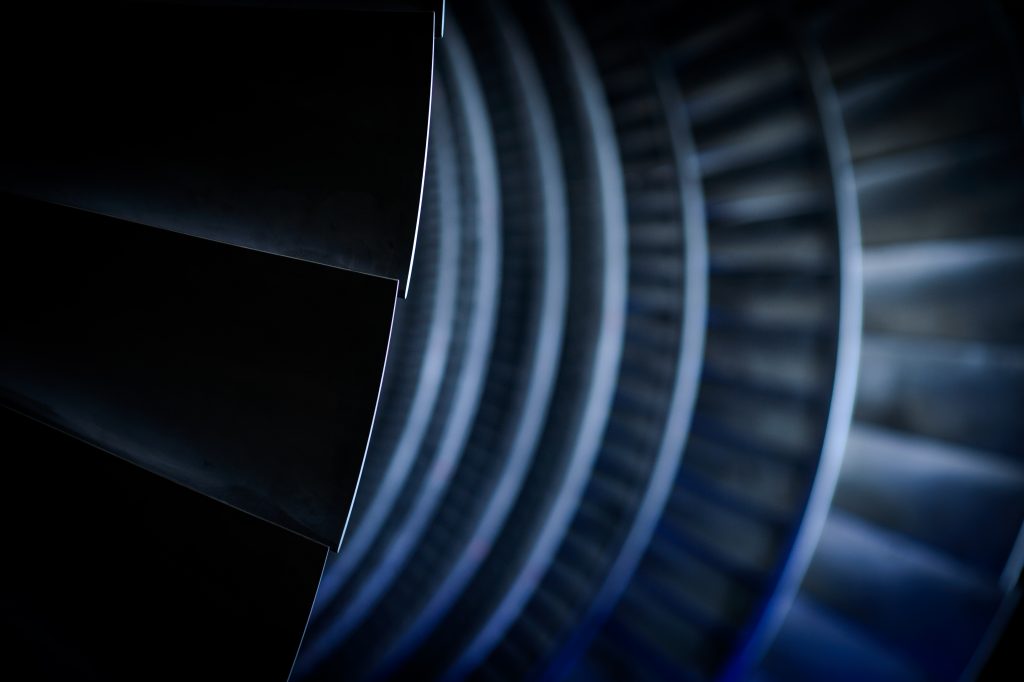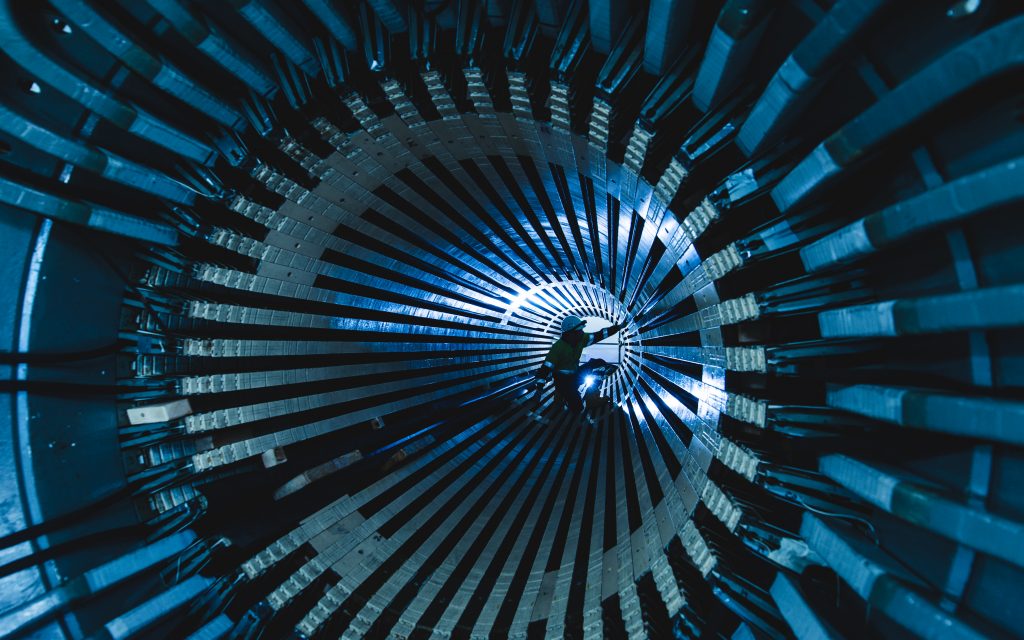From the comfort of home, it’s easy to assume Britain’s power is run across a consistently calm and stable system. And while this is for the most part true, keeping it this way relies on a set of carefully calibrated and connected tools.
These include frequency response – which keeps all electricity around the country on the same frequency – and reactive power – the quiet force moving electricity around the grid. But there’s another at play, and at least by name, it’s something you’ve probably heard of: inertia.
System inertia is energy stored in spinning plant that slows down the rate at which frequency changes. Rapid changes in frequency can create instability in the system. Think of it like a car – inertia does the same job as shock absorbers in the suspension, smoothing the sudden bumps and potholes, keeping the wheels on the ground to maintain control.
However, the changing nature of Britain’s energy system is creating challenges in ensuring there is enough inertia available for a stable future grid.
The energy system’s shock absorbers
Inertia describes objects’ natural tendency (whether they’re moving or resting) to keep doing what they’re doing until forced to change. For example, when you kick a pebble, forces like friction and gravity prevent it hurtling endlessly off into the distance.
Electricity generation in thermal power stations such as Drax involves many moving parts, none more important than turbines and generators. In a turbine, high pressure steam hits a set of blades which makes it spin. A little like running a fan in reverse. The spinning motion is used to power the generator which is a rotor wound in electrified copper wire, transforming it into an electro magnet. As this magnetic field passes through copper bars surrounding the rotor it generates electricity.
This spinning turbine has inertia. If the fuel powering it is suddenly switched off it will continue to spin until it is stopped either by friction or by force. Every thermal generator in the UK system spins at 3,000 rpm, has inertia, and generates electricity at a frequency of 50 Hz. In the UK, all electricity is generated at the same frequency and crucially needs to remain stable – even deviations of 1% from this can damage equipment and cause blackouts.
Managing frequency is done by managing generation. If demand exceeds supply, frequency falls; too much supply and frequency rises. National Grid closely monitors frequency across the system and automatically instructs power generators like Drax to respond to changes in frequency by dialing up or down generation.
And ensuring this change in generation is done smoothly and instantaneously relies on using inertia. For example, using the inertial forces of spinning generators, power stations are able to respond instantly to requests to alter generation.
So, inertia is important to the stability of the power system. But because of the changing nature of today’s grid, we are facing challenges when it comes to inertia. Many forms of renewable generation aren’t built around spinning turbines. And this means no inertia.

Future Challenges
Renewable sources like the wind turbines currently operational in the UK and solar PV, alongside energy imported from the continent, do not provide inertia to the grid.
This means as the UK moves to decarbonise the energy system and rely on more intermittent and often embedded renewable energy rather than thermal-generated electricity, questions arise over where the grid will get the inertia needed to remain stable.
One possible solution is synthetic inertia. While wind turbines do not contain inherit inertia, modern suppliers are now enabling the machine’s rotating blades to create synthetic inertia, which can add extra power to the grid to support generation loss. Some regions, including Germany and Quebec, now require inertia-generation in turbines as standard.
This can’t be done with solar PV. However, smart grids and improving storage technologies have the potential to deal with a lack of inertia. Batteries, which can absorb electricity when there is an oversupply and then release it again when demand is high, can respond near-instantly to fluctuations to help maintain the grid’s frequency.
There are, of course, renewable sources that offer natural inertia, including hydro, tidal and biomass generation. But as the UK shifts to more renewable energy sources with no naturally occurring inertia, these turbine-based generation methods will be vital in ensuring wider grid stability. Gas has an important role too, as a lower carbon alternative to coal power and one that will increasingly shift from being the backbone of Britain’s electricity system to playing a supporting, flexible role.
This short story is adapted from a series on the lesser-known electricity markets within the areas of balancing services, system support services and ancillary services. Read more about black start, frequency response, reactive power and reserve power. View a summary at The great balancing act: what it takes to keep the power grid stable and find out what lies ahead by reading Balancing for the renewable future and Maintaining electricity grid stability during rapid decarbonisation.











